Transylvania
Best region to visit in 2016
Transylvania is ranked first among the top 10 regions to visit in 2016, recommended by Lonely Planet, the largest publisher of travel guides in the world, owned by BBC Worldwide Trust. Transylvania is placed by Lonely Planet above consecrated regions such as Hawaii or Bavaria. This recommendation is part of the Best in Travel 2016 guide.
“Transylvania is undergoing a revival. Cluj-Napoca has been called a city of art of the future by Phaidon and Braşov attracts as many nightlife lovers as vampire hunters. Horses and carts still rumble in the countryside, but soon will share the roads with Uber, which has recently opened an office in Bucharest and will transport travelers to the chic homes listed on Airbnb”, is the description made by Lonely Planet to this region from Romania. Sighișoara and Sibiu are also noted as points of attraction.
“Transylvania is undergoing a revival. Cluj-Napoca has been called a city of art of the future by Phaidon and Braşov attracts as many nightlife lovers as vampire hunters. Horses and carts still rumble in the countryside, but soon will share the roads with Uber, which has recently opened an office in Bucharest and will transport travelers to the chic homes listed on Airbnb”, is the description made by Lonely Planet to this region from Romania. Sighișoara and Sibiu are also noted as points of attraction.

Transylvania or Ardeal is a land bordered by the Carpathians. Over time it was part of Dacia, the Roman Empire, the Austro-Hungarian Empire. For about 170 years, between 1526 and 1699, it was an independent state called the Principality of Transylvania.
The most important cities are: Cluj Napoca, Braşov, Timişoara, Sibiu, Baia Mare, which are renowned both as cultural and tourist centers as well as strong industrial centers.
The most important cities are: Cluj Napoca, Braşov, Timişoara, Sibiu, Baia Mare, which are renowned both as cultural and tourist centers as well as strong industrial centers.
What do we visit?
The Black Church from Braşov, is one of the most representative monuments of Gothic architecture in Romania, dating from the 14th and 15th centuries. With a length of over 89 meters, it is considered to be the largest church in Romania. Because of its size, when it was completed, it was named the largest church between Vienna and Constantinople. The present Black church stands on the site of an old Romanesque church, dating from the 13th century, destroyed in the great Tartar invasion of 1241.
The current construction began in 1383 when Braşov was in a period of strong economic and cultural development; it was the most important commercial and industrial town at the border of Transylvania and Wallachia. Between 1836 and 1839 the company Berlin Buchholz placed a pipe organ of large dimensions (approximately 4000 pipes) in the west gallery. It was inaugurated on April 17th, 1839 by the organist Carl August Buchholz who played an improvisation.
The current construction began in 1383 when Braşov was in a period of strong economic and cultural development; it was the most important commercial and industrial town at the border of Transylvania and Wallachia. Between 1836 and 1839 the company Berlin Buchholz placed a pipe organ of large dimensions (approximately 4000 pipes) in the west gallery. It was inaugurated on April 17th, 1839 by the organist Carl August Buchholz who played an improvisation.
The Black Church is the largest religious building in the Gothic style in Southeast Europe, measuring 89 meters in length and 38 meters in with. This church can hold about 5.000 people. It is a hall-type church in the gothic style, consisting of a choir, nave and tower
The Greek-Catholic Cathedral “Transfiguration” from Cluj is an architectural gem. The necessary money to construct this establishment came from a donation given by Archduchess of Austria and Queen of Hungary and Croatia (1717-1780).
Bran Castle – built in 1382 from mountain and river stone, with rooms that form a mysterious maze, today Bran Castle is a medieval art museum. It holds an interesting collections of weapons, armor and furniture. Many legends have it at their core; they tell the tale of the castle which was the residence of Prince Vlad Tepes (1431-1476) – personality who inspired the famous character Dracula.
Bran Castle – built in 1382 from mountain and river stone, with rooms that form a mysterious maze, today Bran Castle is a medieval art museum. It holds an interesting collections of weapons, armor and furniture. Many legends have it at their core; they tell the tale of the castle which was the residence of Prince Vlad Tepes (1431-1476) – personality who inspired the famous character Dracula.
Matia House is one of the most important historical monuments of Cluj because this is the brith place of Matthias Corvinus, King of Hungary (1458-1490), he was the son of Transylvania’s ruled John Hunyadi. Since then, Matia house went through various changes and adaptations to new styles. In the first half of the 16th century, a series of architectural Renaissance elements were introduced. At the end of the 19th century, it was restored, being in an advanced state of degradation, and on this occasion, a series of elements specific to the style of the 1900’s were introduced. It was restored again in 1940 by the architect Károly Kos and then, during the communist era, many of the changes from the 1900s were eliminated.
Brukenthal National Museum is the largest museum in southeast Europe, primarily due to vast patrimony collections. Located in the historic center of Sibiu, Brukenthal complex consists of the Brukenthal Palace, the Natural History Museum, the Museum of History, the History of Pharmacy Museum, and the Museum of Arms and Hunting Trophies. Brukenthal Museum is the first museum which officially opened in Romania in 1817, and at that time had 1,090 paintings from the collection of Baron Samuel Brukenthal.
Brukenthal Palace building, located in the historic center of the city, specifically in the Market Square, is one of the most important baroque monuments in Romania. It was built in several stages between the years 1778-1788, and its original destination was as the residence of Baron Brukenthal, and as a space dedicated to his collections. Brukenthal Palace is the most visited museum in the city, perhaps because it is the largest of its kind, and because of its central location. The façade of the palace still keeps the emblem of family Brukenthal (emblem often encountered on Sibiu postal cards).
Baroque salons, spaces of receptions and musical evenings keep the original parts of the Palace. Some of the most important pieces are: stoves of rococo and neoclassical style, red silk wallpaper and oriental style painted wall paper, Murano glass chandeliers and furniture pieces from Transylvania. The Palace houses the Art Gallery and the Brukenthal Library. The Art Gallery is made up of permanent exhibitions: the National Art Gallery, the Cabinet of Prints, the Decorative art collection and the Brukenthal Pinacotheca. We don’t know much about the formation of the existing collections in the museum’s heritage, the first purchasing records appearing only after 1770. The old Fund’s collection includes European engravings from the XVI-XVIII centuries.
Brukenthal Palace building, located in the historic center of the city, specifically in the Market Square, is one of the most important baroque monuments in Romania. It was built in several stages between the years 1778-1788, and its original destination was as the residence of Baron Brukenthal, and as a space dedicated to his collections. Brukenthal Palace is the most visited museum in the city, perhaps because it is the largest of its kind, and because of its central location. The façade of the palace still keeps the emblem of family Brukenthal (emblem often encountered on Sibiu postal cards).
Baroque salons, spaces of receptions and musical evenings keep the original parts of the Palace. Some of the most important pieces are: stoves of rococo and neoclassical style, red silk wallpaper and oriental style painted wall paper, Murano glass chandeliers and furniture pieces from Transylvania. The Palace houses the Art Gallery and the Brukenthal Library. The Art Gallery is made up of permanent exhibitions: the National Art Gallery, the Cabinet of Prints, the Decorative art collection and the Brukenthal Pinacotheca. We don’t know much about the formation of the existing collections in the museum’s heritage, the first purchasing records appearing only after 1770. The old Fund’s collection includes European engravings from the XVI-XVIII centuries.
Karoly Castle was an important fortress in Transylvania’s defense system. The castle belonged to Karoly Laszlo first, who built it in the 15th century, then to various other people each of whom made improvements and transformed it from the original simple fortified house into a great and important castle.
Viscri, is the stunning village where Prince Charles of Wales (b. 1948) bought a house, must not be missed on a visit to Transylvania.
Viscri, is the stunning village where Prince Charles of Wales (b. 1948) bought a house, must not be missed on a visit to Transylvania.
Braşov is one of Romania’s most well sought for cities,with its cable car, ski slopes and ski lifts, and unique views that open in Poiana Braşov. You can also visit the mineral water springs from its surroundings which are said to have positive health effects.
Băile Felix is located 9 km away from the city of Oradea. The destination is recommended for the treatment of inflammatory rheumatic diseases, disorders of metabolism and nutrition, gynecological disorders.
Băile Felix is located 9 km away from the city of Oradea. The destination is recommended for the treatment of inflammatory rheumatic diseases, disorders of metabolism and nutrition, gynecological disorders.
Sovata is located in the middle of Transylvania, 60 km away from Târgu Mureş. The destination is recommended for treating gynecological diseases, disorders of the musculoskeletal apparatus, cardiovascular and thyroid disorders. The resort has welcoming and comfortable hotels and villas.
Geoagiu Băi is located 19 km away from the city of Deva. It is recommended for treatment of rheumatic, endocrine, and dermatological diseases. Accommodation is offered in hotels and villas. The resort also has sports fields and fishing spots.
Geoagiu Băi is located 19 km away from the city of Deva. It is recommended for treatment of rheumatic, endocrine, and dermatological diseases. Accommodation is offered in hotels and villas. The resort also has sports fields and fishing spots.
Buziaş is located 37 km away from the city of Timişoara, in the west of the country. It is a resort sought for treating cardiovascular, nervous and digestive system.
The Vineyard Târnavelor is the largest vineyard in Transylvania. The vineyard lies within the triangle formed by the towns Blaj – Sighişoara – Bălăuşeri. The archaeological finds, historical documents and items specific to viticulture and winemaking are a testament to the long tradition in this area. The important localities where the wine is produced are: Jidvei, Cetatea de Baltă, Băgaciu, Blaj, Târnăveni.
The Vineyard Târnavelor is the largest vineyard in Transylvania. The vineyard lies within the triangle formed by the towns Blaj – Sighişoara – Bălăuşeri. The archaeological finds, historical documents and items specific to viticulture and winemaking are a testament to the long tradition in this area. The important localities where the wine is produced are: Jidvei, Cetatea de Baltă, Băgaciu, Blaj, Târnăveni.
A visit in Transylvania cannot be complete without a trip to Cluj, Braşov, Sibiu and Timişoara. Cluj lures you in with trendy pub sites, amazing nightlife, and an impressive choice of cultural activities. Sibiu, which received the title of “cultural capital” in 2007, needs no presentation. Braşov invites you to travel back in history and to enjoy a wide range of sports such as trekking, skiing, or cycling.
